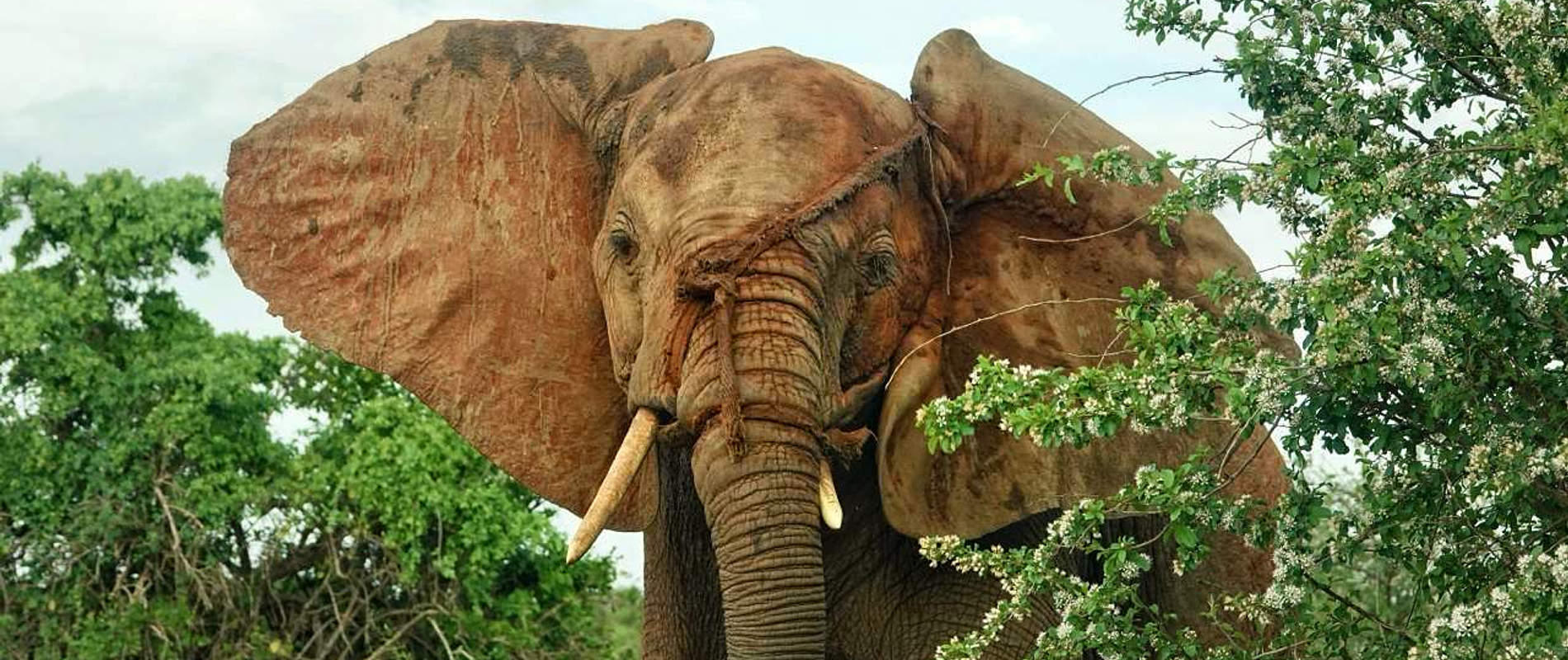When the elephant lifted her head and met our Tsavo Works Manager’s eyes, he did a double take: In all his decades working in the field, he had never seen something quite like it. To further compound the surreal situation, the elephant seemed to be asking him for help.

Driving through the southern plains of Tsavo East, elephants are a common sight. All the same, our field teams are in the habit of taking a studied look at each one they pass. You can never be too careful — and a second glance might just reveal an injury that would otherwise go untreated.

However, this particular injury left nothing to the imagination. Somehow, the elephant had become entangled in a thick canvas strap. It had gotten knotted, twisted, and tangled around her face, head, and ears, leaving her in a terrible bind. To make matters even worse, the strap was cinching snare-like around her trunk, inhibiting her ability to eat.

The elephant was in the company of two other females. While they made a hasty retreat when he stopped his vehicle, she seemed very reluctant to leave. In fact, she walked even closer to him and stood there, as if asking for help.

With dusk settling, it was too late to organise a treatment. At our Kaluku Field Headquarters, we organised a plan for first light. While it pained us to know that the elephant had to endure another night in her predicament, she was surrounded by friends and was in no imminent danger.

Just after dawn on the morning of 30th March 2024, our fixed-wing pilot set out to find the patient. He located her and her friends close to Msinga Hill, not far from her original sighting the night prior. Meanwhile, our helicopter pilot picked up KWS veterinarian Dr Kariuki, as the SWT/KWS Tsavo Mobile Vet Unit was off-duty at the time.

The treatment unfolded smoothly. The patient was darted without incident and the team immediately moved in to cut away the strap. It had inflicted even greater damage than we initially thought: Much like a snare, the strap had sliced into the bottom of the elephant’s trunk, leaving a deep gash. Left much longer, it would have likely severed her trunk.

Fortunately, she was spared such a terrible fate. Dr Kariuki and the SWT/KWS Mobile Vet Unit tended to the gash and various other abrasions around her ears and head, thoroughly cleaning the wounds and applying antiseptic to stave off infection. With treatment complete, the anaesthetic was reversed and the patient got to her feet.

The elephant’s saga closed with the best possible sign of success: She got to her feet and promptly tucked into some nearby greens, browsing easily and without pain. We can only imagine how relieved she must have felt to be free of her terrible tangle. Reuniting with her nearby friends, life could resume as it should.

As this incident reminds us, every discarded object has the potential to harm our wild world. It is incredibly important that humans take responsibility for their refuse and leave nothing behind. All creatures, from the smallest bird to the biggest elephant, are relying on us.
